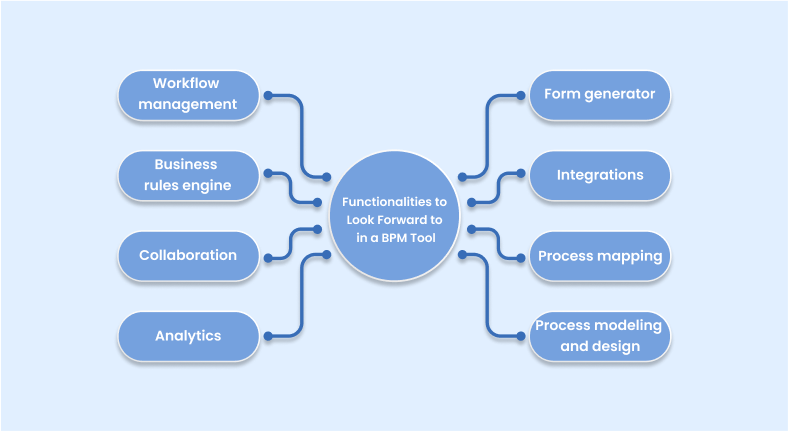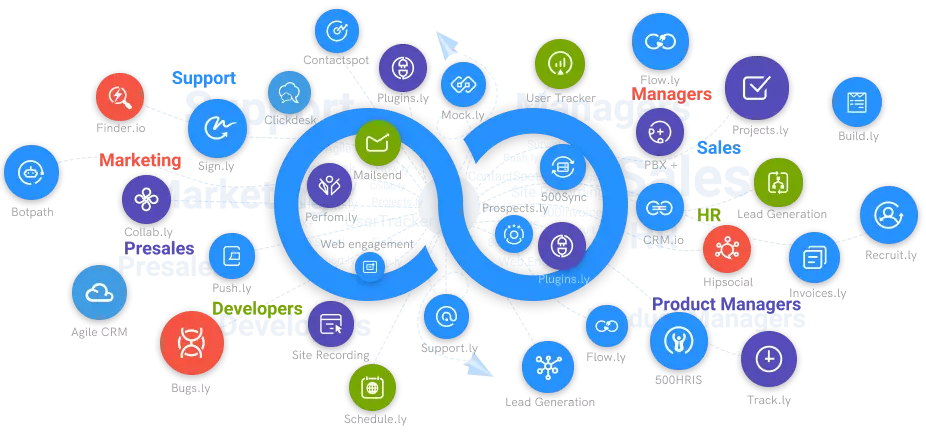What is Business Process Modeling?
Business process modeling is a method for discovering and documenting how a company runs. It contains the critical information required for the creation of a system.
#1
All-in-One Suite with more than 50 apps
#2
Everything you need today and in the future for all departments
#3
Unbelievable value - the lowest pricing you will ever find
#4
Hosted in 6 locations for compliance and blazing speeds
#5
24/5 Support - FREE chat, email and phone
#6
Uncapped features - limits you will never reach humanly
#7
Managed and maintained everyday by a dedicated team
#8
No downtime - comes with a 99.9% uptime guarantee
#9
Supports a number of international languages
#10
We've everything covered - 90k+ trust us with their business
Business process modeling is a technique that creates a visual representation of a business process. This is often accomplished via the use of business process modelling tools such as flowcharts and the Global Business Modeling Process Icon (also known as BPMN).
Following that, business process modelling is used to find improvements in the organization's business processes or workflows. It accomplishes this by designating two distinct repetitions of a certain procedure. The first is a process that is currently unaltered. The second is how the procedure appears following the adjustments.
The phases within the procedure can be manually drawn. This strategy, however, is far more time consuming though less expensive, than adopting an automatic solution such as business process modeling software. With software, companies can easily create and implement a process model to spot areas for improvement.

A BPM System is a highly efficient technology that provides companies with a wide range of advantages. Among these advantages are:
1. Identifies Areas for Improvement
Business process modelling is primarily used to help individuals involved understand how the process for improvement works.
2. Transparency
The business process model outlines what should be done, who is in charge of it, and how the process helps the company accomplish its goals. Building trust and responsibility within the organisation is facilitated by this in a significant way.
3. Maneuverability and Flexibility
Covid-19 has forced many businesses to change their goals and strategies almost overnight. Stakeholders may discover modifications that align with new goals and quickly implement them through business process management. Process models can also help businesses identify opportunities to streamline their processes by identifying similarities between different units. For example, if two different departments in a company are both using similar software to manage their purchase inquiries, a process model can help stakeholders see this and implement a company-wide system. This can save time and money by reducing duplicate effort and improving efficiency.
What are the Features and Functionalities of Business Process Modeling tools?
By linking several systems, a BPM programme tries to assist a non-IT person in creating business operations. Typically, they provide a visual user interface via which relatively non-technical individuals may create and test workflows and processes.
Some of the Functionalities to Look Forward to in a BPM Tool are:

Workflow management: Users should be able to create, test, and implement intricate processes in order to manage the interactions between personnel, systems, and data. These processes are automated by a workflow software (project management tool) for businesses.
Business rules engine: To manage the interactions between people, systems, and data, users should be able to design, test, and implement complex processes. Project management solutions for corporations automate these procedures.
Collaboration: Collaborations such as discussion boards, decision-making, and idea management could benefit from the tools.
Analytics: The programme should offer analytics that can help users obtain new insights on how the business is run. Users must be able to construct measurements and key performance indicators (KPIs), as well as run pre-built and customised reports.
Form generator: Users should be able to easily design web forms using a BPM tool without having to have any technical or programming experience.
Integrations: Businesses must be able to use data across systems and interfaces, and software must allow for simple integration.
Process mapping: The programme should describe and show all of the details and links between your business process models and the elements of these models.
Process modeling and design: To boost your organization's overall productivity, the software should map your business processes and design them into digital workflows.
Why Use BPMApp?

Using a BPMApp allows users to design, model, execute, automate, and analyze process workflows. Some of the processes you can use BPM software to automate include:
- Onboarding of employees
- Reporting expenses
- Requests time-offs
- Account management
- Invoice management
- Origination of loans
- Compliance management
- Customer requests and service orders
- Compliant management
- Project management or development
Conclusion
The most crucial lesson from this essay is that businesses may utilise BPM to develop a more data-driven decision-making process. The purpose of business process modelling (BPM), which is used to analyse current performance and spot chances for workflow improvement, is to break down an organization's business processes into specific workflows. Process modeling has a bright future since, according to industry analysts, it will become a crucial component of many other industries, including artificial intelligence.





